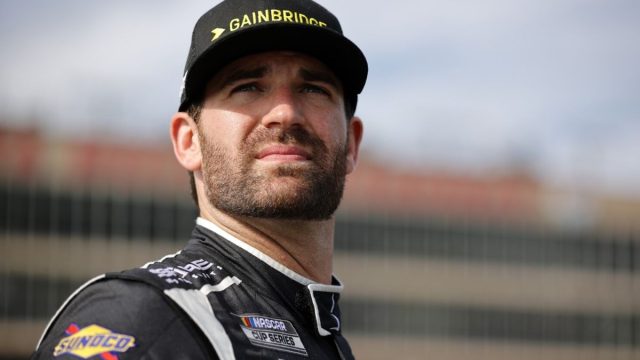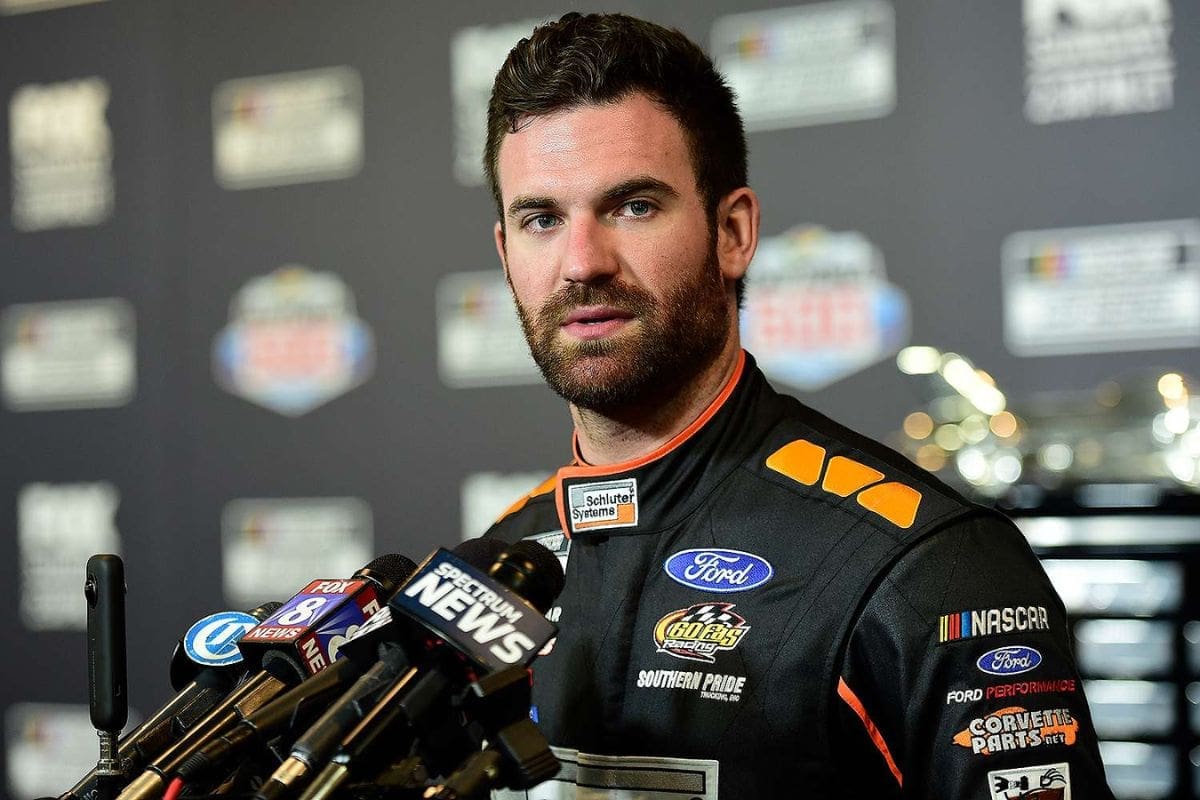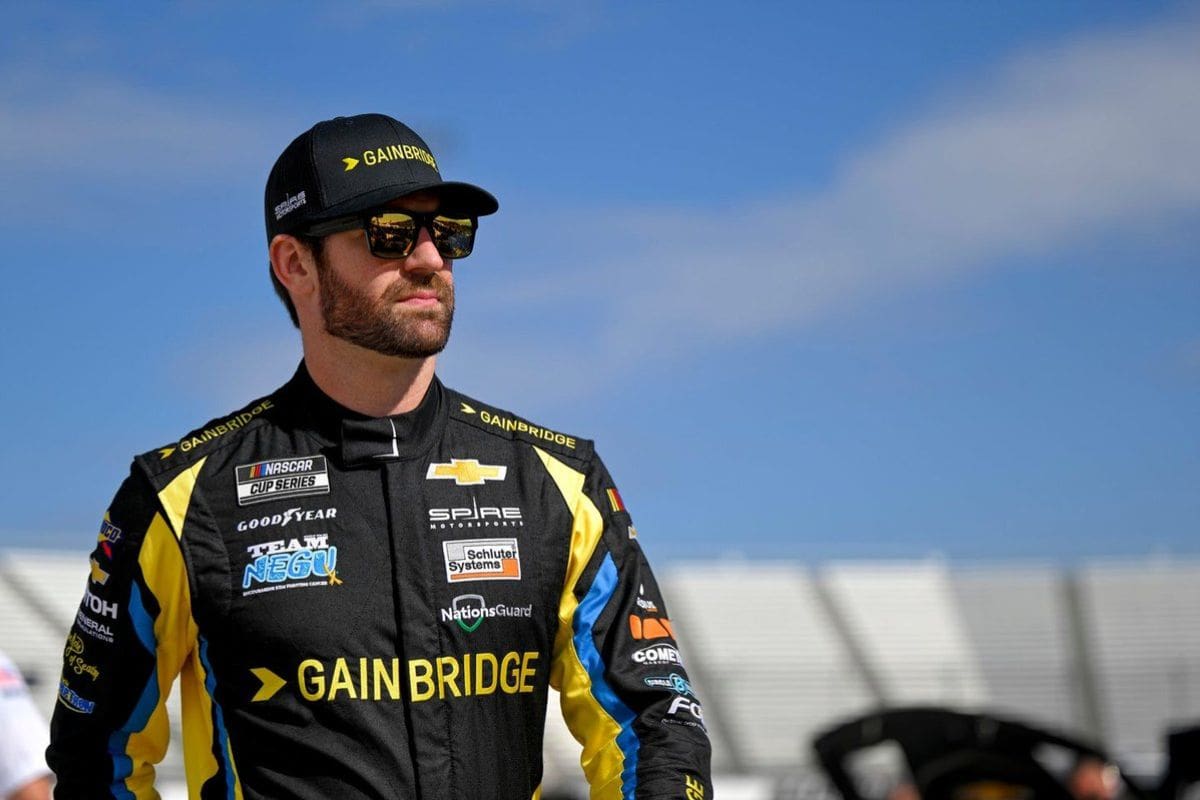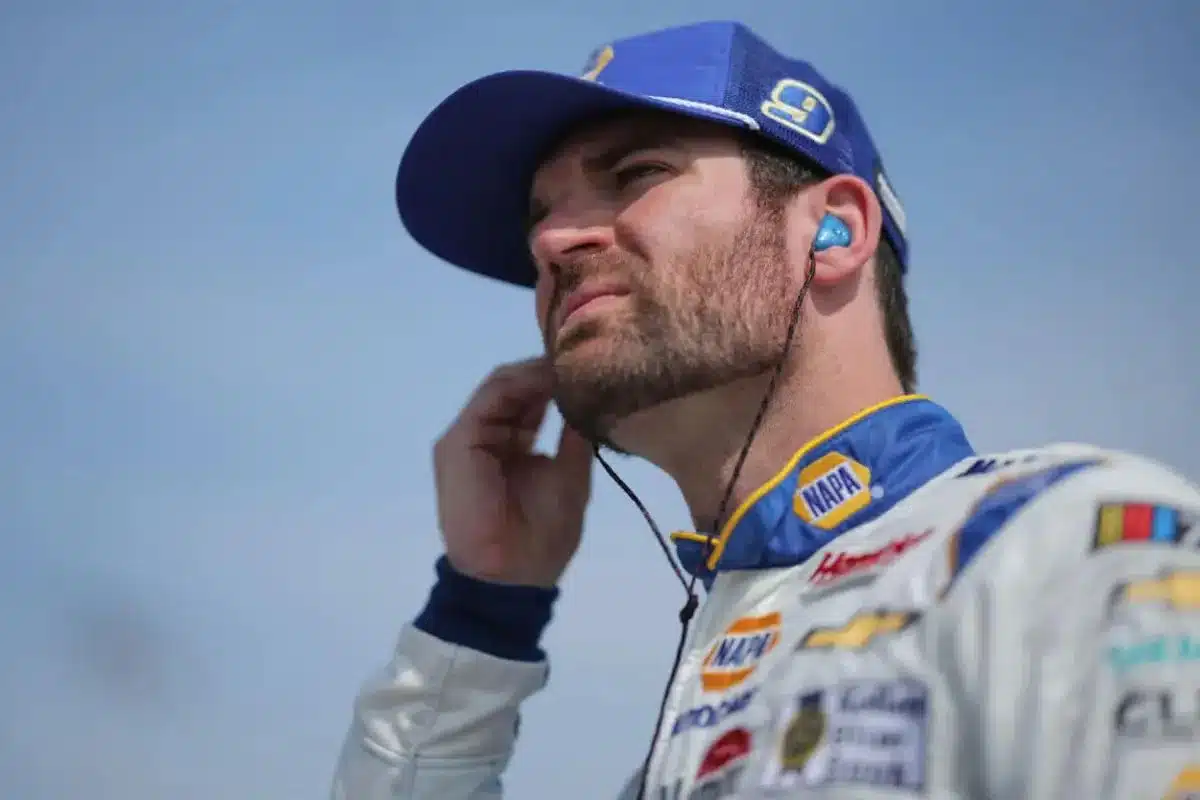Corey LaJoie’s Talladega Flip: In NASCAR, Corey LaJoie’s dramatic last-lap flip at Talladega has once again thrust the inherent dangers and unpredictability of motorsport into the limelight. During the concluding segment of the race, LaJoie, piloting the No. 7 Chevy, was caught in a multi-car tumult, resulting in a spectacular overturn that mirrored the volatile nature of superspeedway contests. This incident not only highlights the critical importance of safety innovations in racing but also raises questions about the aggressive driving tactics often employed in such high-stakes scenarios.
Key Takeaways
- Corey LaJoie’s race at Talladega ended dramatically due to a last-lap crash.
- The No. 7 Chevy was caught in a chain-reaction incident initiated by Michael McDowell’s defensive block.
- LaJoie’s involvement in the crash was a result of unavoidable high-speed contact.
- The chaotic finish was typical of the volatile nature of superspeedway racing at Talladega.
- The incident underscored the critical balance of aerodynamics and driver strategy in NASCAR.
Corey LaJoie’s Unconventional Finish at Talladega
In an extraordinary display of unpredictability, Corey LaJoie’s race at Talladega concluded in a manner far from typical, as he crossed the finish line amidst a flurry of last-lap chaos. Representing Spire Motorsports, LaJoie, driving the No. 7 Chevy, found himself engulfed in a dramatic sequence of events. This incident not only showcased his resilience but also demonstrated the inherent unpredictability of NASCAR racing at such high-speed tracks.
As the laps dwindled down at Talladega Superspeedway, known for its perilous racing environment, drivers battled aggressively for position. This aggressive navigating is typical of Talladega’s closing stages, where the confluence of high speeds and close-quarter racing amplifies the likelihood of accidents. LaJoie, steering through a tightly packed field, was inevitably caught in what can best be described as a vehicular swirl. The chaos occurred when multiple cars collided, triggering a chain reaction that reshaped the race’s outcome.
This particular incident provided a stark demonstration of the aerodynamic and mechanical interplay at play in stock car racing. At speeds exceeding 200 mph, the aerodynamic draft plays an important role. Drivers utilize the slipstream of leading cars to gain speed and maneuverability. However, this tactic also reduces the margin for error, making timing and spatial judgment critical. LaJoie’s final lap at Talladega was a reflection of this delicate balance, as his finish was not just a matter of speed but of strategic navigation through an unpredictable and dynamic racing environment.
LaJoie’s Post-Race Interview
Reflecting on his tumultuous final lap at Talladega, Corey LaJoie shared his thoughts in a post-race interview, highlighting the challenges of finding the optimal racing position during the pivotal moments of the race. His experience highlights a broader theme in racing: the delicate balance between strategy and risk, especially as races approach their climax.
LaJoie, aged 32, described the race as a “pretty wild ride,” a demonstration of the sheer unpredictability and intensity that define Talladega’s racing dynamics. His struggle to secure a prime position in the critical final lap reflects the intricate tactical decisions drivers must make at high speeds, surrounded by competitors equally eager for victory. These decisions, made in split moments, often determine not just the outcome of a race but can have significant implications for a driver’s season.
“Um pretty wild ride just never could quite get it in the right spot the right time there at the end.”
“Then you just know you’re just waiting to pile them up good thing I tug gave the belts an old good old tuggy with about three to go so I didn’t bounce around too much um you know and didn’t have a great day.”-LaJoie
His narrative brings to light the critical aspect of timing and spatial judgment in motorsport. Positioning is not just about speed but also about anticipating the movements of other drivers and reacting adeptly to rapidly changing situations.
“I did a full rotation so I did like left side on the ground for a bit then it kind of stopped then it flipped over hit the roof and then landed on all fours and the all four hit was was pretty big so um glad glad I slipped past star finish line though so I to run past to that guy was Carl Edwards so at least I made it past star finish line.-LaJoie
The Chain-Reaction Crash
Building on LaJoie’s personal recount, the chain-reaction crash that ensued highlights the dynamic nature of NASCAR races at superspeedway circuits like Talladega. At these high-speed venues, the tightly packed, high-velocity racing often precipitates complex, multi-car incidents, where split-second changes in one part of the field can spread through the pack with dramatic results. In this instance, a dozen cars were ensnared in a ballet of metal and momentum, triggered by aggressive actions at the front.
Analyzing the sequence, it’s evident that the spatial dynamics and high speeds characteristic of Talladega played critical roles. The drivers, encased in their high-powered machines, were threading through on the edge of aerodynamic and mechanical limits. As the front runners jostled for position, the slightest miscalculation acted as a trigger for the ensuing chaos. LaJoie’s vehicle, caught in the turmoil, was hit and sent airborne, a clear demonstration of the forces at play.
The aerodynamics of NASCAR vehicles are finely tuned for stability and speed but are vulnerable to sudden disruptions when cars are packed closely together. This susceptibility is aggravated on superspeedways where the aerodynamic draft can both assist and impact the performance of the cars. When LaJoie’s car flipped, it was not merely a result of the contact but also of the complex aerodynamic interactions in close-quarter racing.
The Cause of the Crash
The significant moment that led to the dramatic last-lap crash at Talladega was initiated when Michael McDowell executed a defensive block against Brad Keselowski, who was attempting to overtake for the lead. This tactic is a common yet risky strategy within the high-speed chess game of NASCAR racing. McDowell, leading the pack, opted to prevent Keselowski from using the draft to slingshot past him, a tactic often seen in the closing laps of restrictor-plate races.
The execution of this block, however, requires precise timing and spatial awareness. McDowell’s Ford veered to hold its position, inadvertently making contact with Keselowski’s Ford. This contact is crucial as it destabilizes the trailing car, reducing its aerodynamic efficiency and grip. At the speeds they were operating, even a minor deviation can translate into a loss of control. Consequently, Keselowski’s attempt to regain control led to a spin-out, triggering a chain reaction involving several vehicles behind him.
Among the chaos, Corey LaJoie’s Chevy, which was trailing in the pack, found itself in an unavoidable position, colliding with Josh Berry’s vehicle. The impact was such that LaJoie’s car was pitched underneath Berry’s, lifting it sideways against the wall.
Corey LaJoie went for a wild ride. pic.twitter.com/Pvnpb1xSFY
— FOX: NASCAR (@NASCARONFOX) April 21, 2024
News in Brief: Corey LaJoie’s Talladega Flip
The incident involving Corey LaJoie at Talladega highlights the inherent unpredictability and peril of NASCAR racing on superspeedway circuits. The event serves as a clear depiction of the critical nature of aerodynamics and strategic positioning in motorsports, particularly in high-stakes environments. This occurrence not only emphasizes the challenges faced by drivers in maintaining control under extreme conditions but also showcases the advanced safety mechanisms within the sport that protect drivers during such high-impact incidents.
Our Reader’s Queries
Q. Has Corey LaJoie ever won?
A. Unfazed by the challenges of climbing the ranks, LaJoie tackled the top developmental series of NASCAR head-on. This included the ARCA Menards Series East, where he contested six races, and the premier ARCA Menards Series, where he went up against the toughest competition in what is now a NASCAR-owned series…
Q. Who is the number 7 car in NASCAR?
A. Corey LaJoie is slated to helm the No. 7 Chevrolet for Spire Motorsports on a full-time basis in the 2023 NASCAR Cup Series, marking his third consecutive season with the team. LaJoie’s tenure follows his stint with Go Fas Racing, showcasing his continued dedication to the sport at the highest level.
Q. Who is number 7 in NASCAR 2024?
A. Schluter Systems has announced its sponsorship of Corey LaJoie for four races in the upcoming 2024 NASCAR season. The partnership will see LaJoie piloting the No. 7 Group1001 Chevrolet for Spire Motorsports, with one of the highlighted races set for March at Phoenix Raceway.
ALSO READ: Corey LaJoie Talladega’s Crash: Stunning Finish Line Footage




